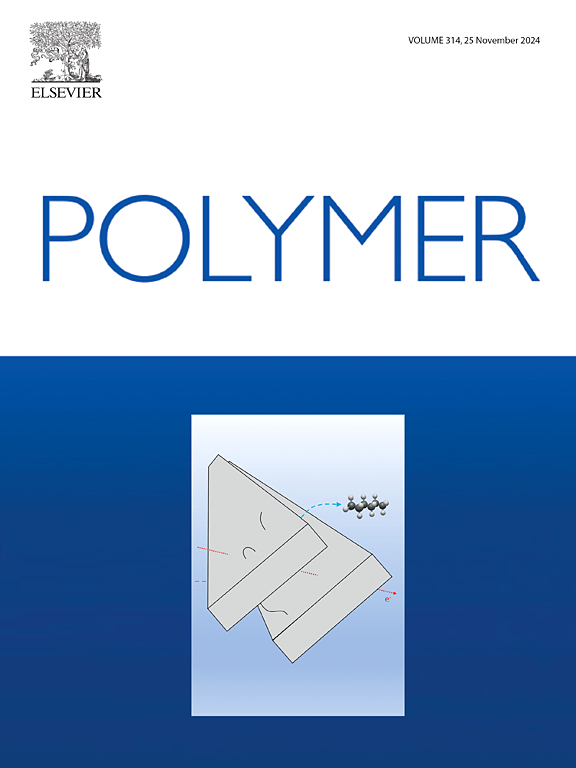The effect of deformation temperature on microstructure and properties of die-drawn iPP/HDPE blends
IF 4.1
2区 化学
Q2 POLYMER SCIENCE
引用次数: 0
Abstract
It is urgent to recycle non-degradable waste plastics. Conventional mechanical recycling requires sorting different types of polymer materials which is quite expensive or even not practical. Hence it is crucial to develop a processing method for incompatible polymer blends. In this work, we successfully processed isotactic polypropylene (iPP) and high-density polyethylene (HDPE) blends via a die-drawing process at different temperatures. It turned out that changing the deformation temperature could influence the microstructure and properties of the die-drawn samples. For samples deformed at temperatures below the melting point of HDPE, the molecular chain orientation and long period increased markedly after die-drawing, while this increase was less significant for samples deformed at temperatures above the melting point of HDPE. Subsequently, the former samples exhibited better thermal stability and mechanical properties than both the latter samples and the undeformed samples. The Young's modulus is more than two times and the fracture stress is more than five times the values determined for the undeformed sample. As for the samples deformed at temperatures above the melting point of HDPE, their fracture stress doubled comparing to the one of undeformed sample, despite voids with dimensions of several hundreds of nanometers which were observed in these samples.


变形温度对iPP/HDPE模拉共混物组织和性能的影响
不可降解废塑料的回收利用迫在眉睫。传统的机械回收需要对不同类型的高分子材料进行分类,这是非常昂贵的,甚至不实用。因此,开发一种不相容聚合物共混物的加工方法至关重要。在这项工作中,我们通过在不同温度下的模拉工艺成功地加工了等规聚丙烯(iPP)和高密度聚乙烯(HDPE)共混物。结果表明,改变变形温度会对模拉试样的组织和性能产生影响。在低于HDPE熔点温度下变形的样品,拉模后分子链取向和长周期明显增加,而在高于HDPE熔点温度下变形的样品,这种增加不太明显。结果表明,变形试样的热稳定性和力学性能均优于变形试样和未变形试样。杨氏模量是未变形试样的2倍以上,断裂应力是未变形试样的5倍以上。对于在HDPE熔点以上温度下变形的样品,尽管在这些样品中观察到数百纳米尺寸的空洞,但其断裂应力比未变形的样品增加了一倍。
本文章由计算机程序翻译,如有差异,请以英文原文为准。
求助全文
约1分钟内获得全文
求助全文
来源期刊

Polymer
化学-高分子科学
CiteScore
7.90
自引率
8.70%
发文量
959
审稿时长
32 days
期刊介绍:
Polymer is an interdisciplinary journal dedicated to publishing innovative and significant advances in Polymer Physics, Chemistry and Technology. We welcome submissions on polymer hybrids, nanocomposites, characterisation and self-assembly. Polymer also publishes work on the technological application of polymers in energy and optoelectronics.
The main scope is covered but not limited to the following core areas:
Polymer Materials
Nanocomposites and hybrid nanomaterials
Polymer blends, films, fibres, networks and porous materials
Physical Characterization
Characterisation, modelling and simulation* of molecular and materials properties in bulk, solution, and thin films
Polymer Engineering
Advanced multiscale processing methods
Polymer Synthesis, Modification and Self-assembly
Including designer polymer architectures, mechanisms and kinetics, and supramolecular polymerization
Technological Applications
Polymers for energy generation and storage
Polymer membranes for separation technology
Polymers for opto- and microelectronics.
 求助内容:
求助内容: 应助结果提醒方式:
应助结果提醒方式:


